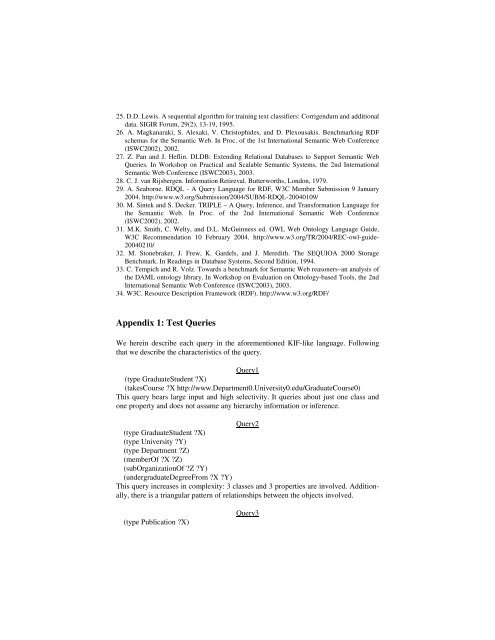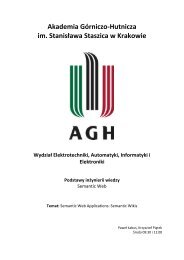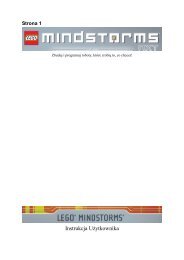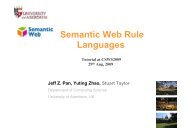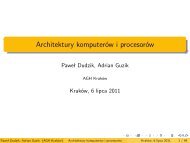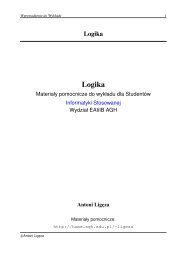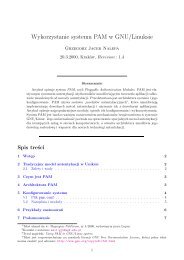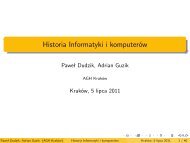An Evaluation of Knowledge Base Systems for Large OWL Datasets
An Evaluation of Knowledge Base Systems for Large OWL Datasets
An Evaluation of Knowledge Base Systems for Large OWL Datasets
Create successful ePaper yourself
Turn your PDF publications into a flip-book with our unique Google optimized e-Paper software.
25. D.D. Lewis. A sequential algorithm <strong>for</strong> training text classifiers: Corrigendum and additional<br />
data. SIGIR Forum, 29(2), 13-19, 1995.<br />
26. A. Magkanaraki, S. Alexaki, V. Christophides, and D. Plexousakis. Benchmarking RDF<br />
schemas <strong>for</strong> the Semantic Web. In Proc. <strong>of</strong> the 1st International Semantic Web Conference<br />
(ISWC2002), 2002.<br />
27. Z. Pan and J. Heflin. DLDB: Extending Relational Databases to Support Semantic Web<br />
Queries. In Workshop on Practical and Scalable Semantic <strong>Systems</strong>, the 2nd International<br />
Semantic Web Conference (ISWC2003), 2003.<br />
28. C. J. van Rijsbergen. In<strong>for</strong>mation Retireval. Butterworths, London, 1979.<br />
29. A. Seaborne. RDQL - A Query Language <strong>for</strong> RDF, W3C Member Submission 9 January<br />
2004. http://www.w3.org/Submission/2004/SUBM-RDQL-20040109/<br />
30. M. Sintek and S. Decker. TRIPLE – A Query, Inference, and Trans<strong>for</strong>mation Language <strong>for</strong><br />
the Semantic Web. In Proc. <strong>of</strong> the 2nd International Semantic Web Conference<br />
(ISWC2002), 2002.<br />
31. M.K. Smith, C. Welty, and D.L. McGuinness ed. <strong>OWL</strong> Web Ontology Language Guide,<br />
W3C Recommendation 10 February 2004. http://www.w3.org/TR/2004/REC-owl-guide-<br />
20040210/<br />
32. M. Stonebraker, J. Frew, K. Gardels, and J. Meredith. The SEQUIOA 2000 Storage<br />
Benchmark. In Readings in Database <strong>Systems</strong>, Second Edition, 1994.<br />
33. C. Tempich and R. Volz. Towards a benchmark <strong>for</strong> Semantic Web reasoners–an analysis <strong>of</strong><br />
the DAML ontology library. In Workshop on <strong>Evaluation</strong> on Ontology-based Tools, the 2nd<br />
International Semantic Web Conference (ISWC2003), 2003.<br />
34. W3C. Resource Description Framework (RDF). http://www.w3.org/RDF/<br />
Appendix 1: Test Queries<br />
We herein describe each query in the a<strong>for</strong>ementioned KIF-like language. Following<br />
that we describe the characteristics <strong>of</strong> the query.<br />
Query1<br />
(type GraduateStudent ?X)<br />
(takesCourse ?X http://www.Department0.University0.edu/GraduateCourse0)<br />
This query bears large input and high selectivity. It queries about just one class and<br />
one property and does not assume any hierarchy in<strong>for</strong>mation or inference.<br />
Query2<br />
(type GraduateStudent ?X)<br />
(type University ?Y)<br />
(type Department ?Z)<br />
(memberOf ?X ?Z)<br />
(subOrganizationOf ?Z ?Y)<br />
(undergraduateDegreeFrom ?X ?Y)<br />
This query increases in complexity: 3 classes and 3 properties are involved. Additionally,<br />
there is a triangular pattern <strong>of</strong> relationships between the objects involved.<br />
(type Publication ?X)<br />
Query3


